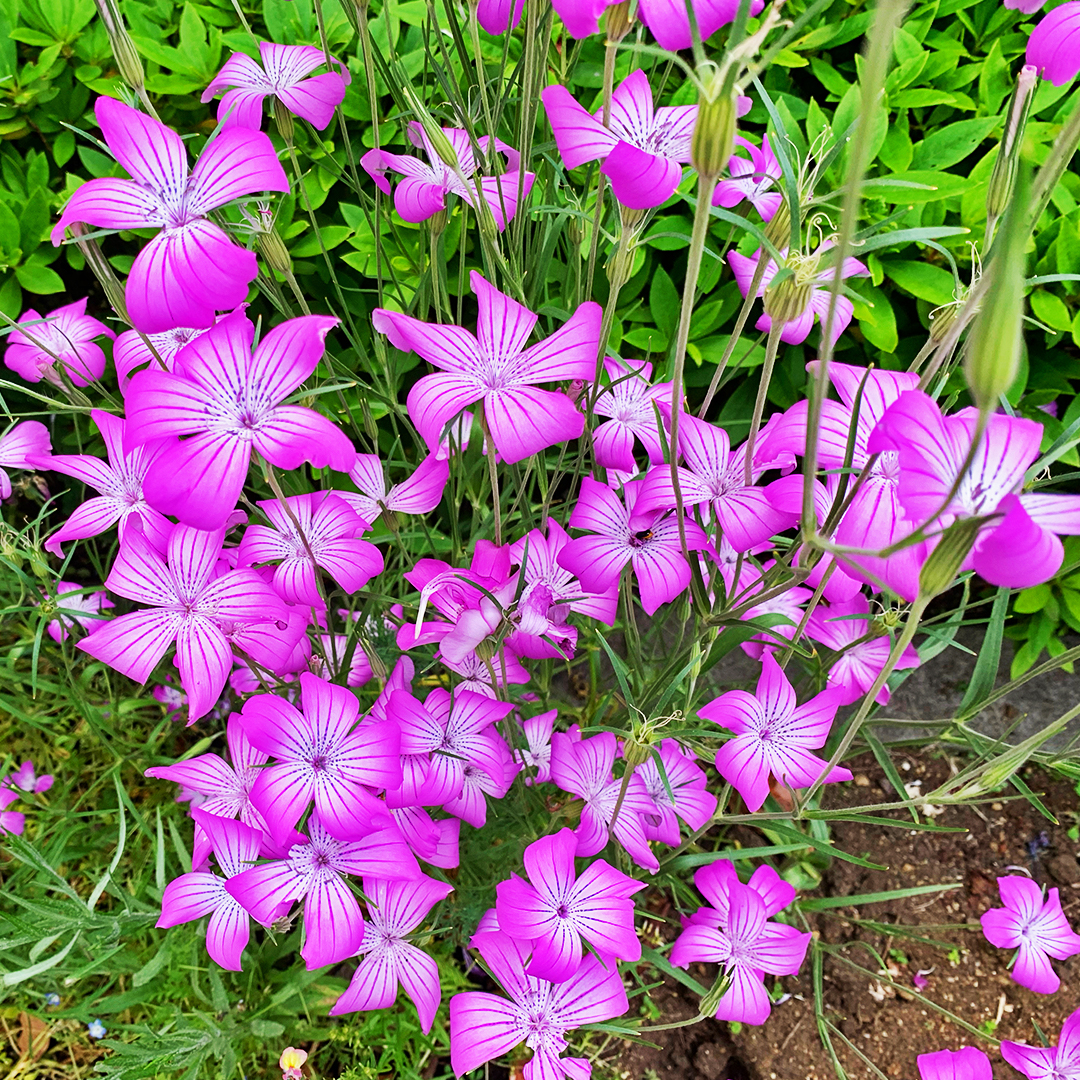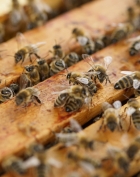Corncockle
Agrostemma githago
Best Time to See: May, June, July, August, September
Colour: Purple, Pink
A slender pink flower of European wheat fields, this wild flower was regarded as very common in the 19th century.
Corncockle is around a metre tall and covered with fine hairs. It has few branches and they are each tipped with a single, deep-pink to purple scentless flower. Flowers are 25 mm to 50 mm across and each petal bears 2 or 3 discontinuous black lines. The leaves are pale green and are 45 mm to 145 mm long. It has been described by Richard Mabey as 'one of the most attractive of cornfield annuals'.
Habitat and distribution
Corncockle originated in Oxfordshire, England in the Iron Age. It is mainly found in fields, roadsides, railway lines and waste places as it relies on open ground to re-establish itself. Although it can grow on most soils, it does particularly well on free-draining sandy loams.
Did you know?
- Corncockle is known locally as cat's eyes and kiss-me-quick. Other interesting common names are cat's ears, cockerel, corn pink, crown of the field, little and pretty, poppy and Robin Hood.
- The name popple goes back to the Middle Ages.
- In Sussex it is known as Puck needles (Puck the goblin) referring to the long teeth of the calyx-tube that spreads out between the bright petals.
- It was formerly regarded as a menace since it was so abundant and made bread taste bitter.
- Corncockle is a poisonous plant, despite it previously being used in folk medicines.
Conservation status
It is now virtually extinct in the wild. It has been placed on the waiting list of the Vascular Plant Red Data List for Great Britain since there is a lack of adequate distributional data. Its seeds were harvested and re-sown for the following season, until it began to decrease rapidly, beginning most noticeably in 1952. The plant was seen as a pest by farmers for hundreds of years but is now rarely seen due to improved seed cleaning techniques and herbicides of modern farming. These days it is only seen occasionally, for instance when old pastureland is ploughed, or when it has been sown deliberately in wildflower gardens.

